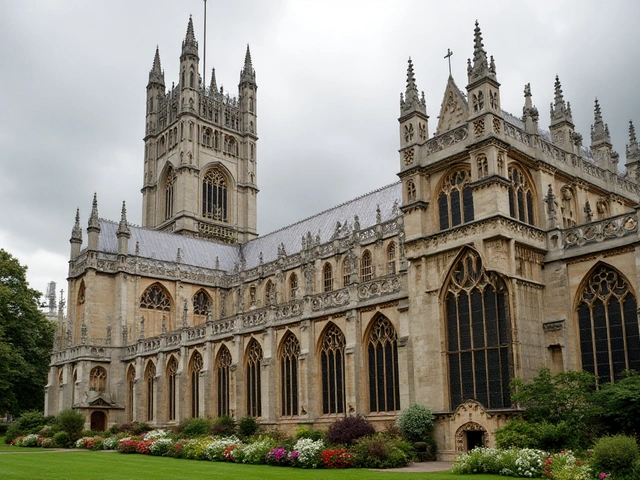Roots and Characteristics of Gothic Revival Architecture
Gothic Revival architecture, a style that originated in the late 1740s in England and flourished in the 19th century, is distinguished by its detailed craftsmanship and romanticized medieval elements. Embodied by features like pointed arches, ribbed vaults, and flying buttresses, the style pays homage to the grandeur of Gothic medieval cathedrals of Europe. The intention behind this revival was not only to bring back the aesthetic qualities of the past but also to imbue modern structures with a certain divine grandiosity that was inherent to the original Gothic style.
The architects of the Gothic Revival, such as A.W.N. Pugin and John Ruskin, were not just reinstating an architectural form but were advocating for a movement that upheld moral and spiritual renewal through architecture. Pugin, in his seminal work 'Contrasts', argued for the return to Gothic architecture as a means to restore moral integrity in society. This ideation laid the foundation for many of the future interpretations of the style.
As time progressed, the application of Gothic Revival in ecclesiastical architecture continued steadily; however, it also saw adaptations in secular buildings, including universities, residences, and even parliamentary buildings, which showcased the versatility and expansive reach of the style. The Palace of Westminster, home to the United Kingdom's Parliament, is a prime example of secular Gothic Revival architecture. It stands as a testament to the enduring appeal and adaptability of the style, merging historical artistic elements with the exigencies of modern use.
Modern Reinterpretation of Gothic Elements
In the contemporary realm, Gothic Revival architecture isn't about mere replication of the past but embodies a deeper reinterpretation that aligns with modern needs and aesthetics. Today's architects incorporate the essence of Gothic finesse into buildings using advanced materials and technology, bringing about a fusion that speaks both of heritage and futurism. The key to this adaptation lies in selective adoption; while some structures may showcase the ornamental finery characteristic of Gothic architecture, others might adopt the structural genius of Gothic designs like the pointed arch and the ribbed vault.
This selective approach can be seen in buildings like the University of Pittsburgh's Cathedral of Learning. Here, the towering structure utilizes the verticality and lightness typical of Gothic architecture but with modern materials and design ideologies that address current functional requirements. Such buildings become a canvas displaying the marriage between antique grandeur and contemporary minimalism.
Educational institutions have particularly found this style conducive to fostering an environment of tradition and continuity. Not just in form, but in ethos, these institutions seem to communicate a lineage of knighthood and scholastic excellence through Gothic architectural elements, tailored, of course, to modern-day sensibilities.
What makes the modern reinterpretation particularly interesting is the dialogue it creates between the old and the new. This architectural conversation not only respects historical accuracy but also embraces innovation, bringing about a distinct identity in contemporary structures that look back as they look forward. This dynamic adds a layer of complexity and appeal to the modern architectural landscape, ensuring that the Gothic Revival is not just preserved in history books but is lived and experienced in modern skylines.




